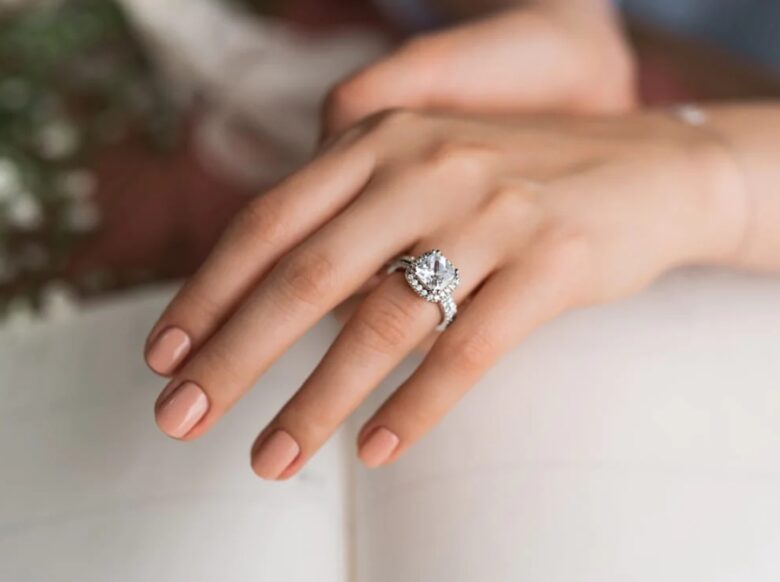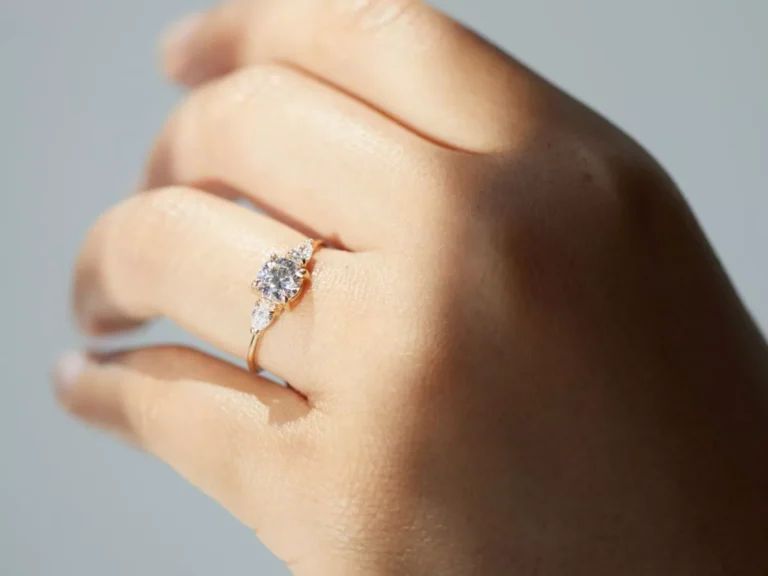The first issue most individuals run into when looking for an engagement ring is determining how much money they should spend on this jewellery item. The majority of web resources recommend the 3-Month Salary Rule.
If you are unsure about this, simply subtract three months from your annual wage to determine how much you should spend on an engagement ring. You might be wondering if there is such a thing as a rule to follow and if it is possible to get a diamond ring for less money and yet receive a lovely item of jewelry. Here is all the information you require.
What Is The Three-Month Salary Rule?
You may control your engagement ring expenses by using the 3-month salary guideline as a guide. However, most people don’t realise that the 3-Month Salary Rule started as an advertising effort by the De Beers Group to persuade men to spend more on engagement rings in the 1980s.
Never invest a significant portion of your life’s savings in a single piece of jewellery. However, it’s fair to say that there is immense pressure to spend a lot of money on a diamond ring.
Not to mention the repeated message, “the bigger the diamond, the better,” which is frequently witnessed in movies and television programs. However, this isn’t true as there are several options available at affordable prices. Click here to know more.

Why You (Probably) Shouldn’t Follow The Three-Month Salary Rule
According to TD Bank’s latest Love and Money survey of 1,753 U.S. adults, one in five persons who plan to get married feel expected to spend between $5,000 and $10,000 on an engagement ring for their future spouse.
Despite these societal constraints, most respondents (59%) claim they only spent $500 to $2,500 on their partner’s ring, which is far less than the three months’ pay that conventional wisdom frequently advises. In fact, the New York Times reports that the average American only puts down two weeks’ worth of earnings.
According to the three-month rule, a person making the current median family income in the United States of $61,937 would need to spend approximately $15,500 before taxes on a ring. Most respondents claimed to have spent a lot more than the $2,500 limit. There is little doubt that the three-month rule is no longer the standard.
How Much Should You Spend On An Engagement Ring?
It’s preferable to ignore salary criteria and concentrate on what you can afford to spend when deciding how much to contribute to your partner’s ring. No matter how much money you choose to spend on a ring, it can still be a significant investment.
Too many people spend excessive money on engagement rings, leaving them with little money left over to pursue other financial objectives, like purchasing a home. You should spend only 5% of your pay on an engagement ring to make your salary metrics more manageable.
Adding the cost of an engagement ring to your overall wedding expenses can also be a sensible move. According to The Knot’s most recent Real Weddings research, the average wedding in the United States in 2019 cost $33,900, including the engagement ring.
If you don’t want to spend less on the wedding itself, keeping the pricing fair can be in your best interest. Too many individuals leave weddings in debt, but if you prepare far in advance, you may reduce that.

Your Budget Should Be Personalized To Your Income And Circumstances
There are several financial planning techniques that might simplify the procedure. Create an account specifically for the ring in the beginning. Put any additional funds you have saved or earned into this account.
Saving even little amounts regularly over time might add up. Let’s say you decide to contribute $40 from each of your biweekly paychecks to your ring fund. With a monthly contribution of $80, you will have $960 saved up after a year.
You can set up an automatic direct deposit through your company if you don’t want to handle biweekly deposits. By employing this method, you can protect your savings goals against impulsive purchases, procrastination, and inconsistent behavior.
Additionally, search for ways to reduce wasteful spending and tighten your budget. You can spend less and contribute more to your ring fund by packing your lunch, preparing dinner at home, and using public transit (rather than a car service).
But keep in mind that you shouldn’t go overboard with the price you’re prepared to spend if you can’t fairly afford the ring you desire.
Avoid using temporary fixes like a credit card or retirement fund when paying for rings. Before taking on any high-interest loan, you should always consider what will be best financially for you and your partner.
Bottomline
The 3-month rule is a useful guide for determining how much you may spend on an engagement ring, but the jewellery industry does not impose this as a requirement. The amount you spend on an engagement ring is entirely up to you and your choice.

Don’t let it discourage you if you can’t currently afford your partner’s “dream ring.” You ought to be content with your purchase and avoid letting it drain your savings at the end of the day. If your marriage is a successful one, there is a good chance that you’ll be buying a new ring or upgrading the current one in the future.

